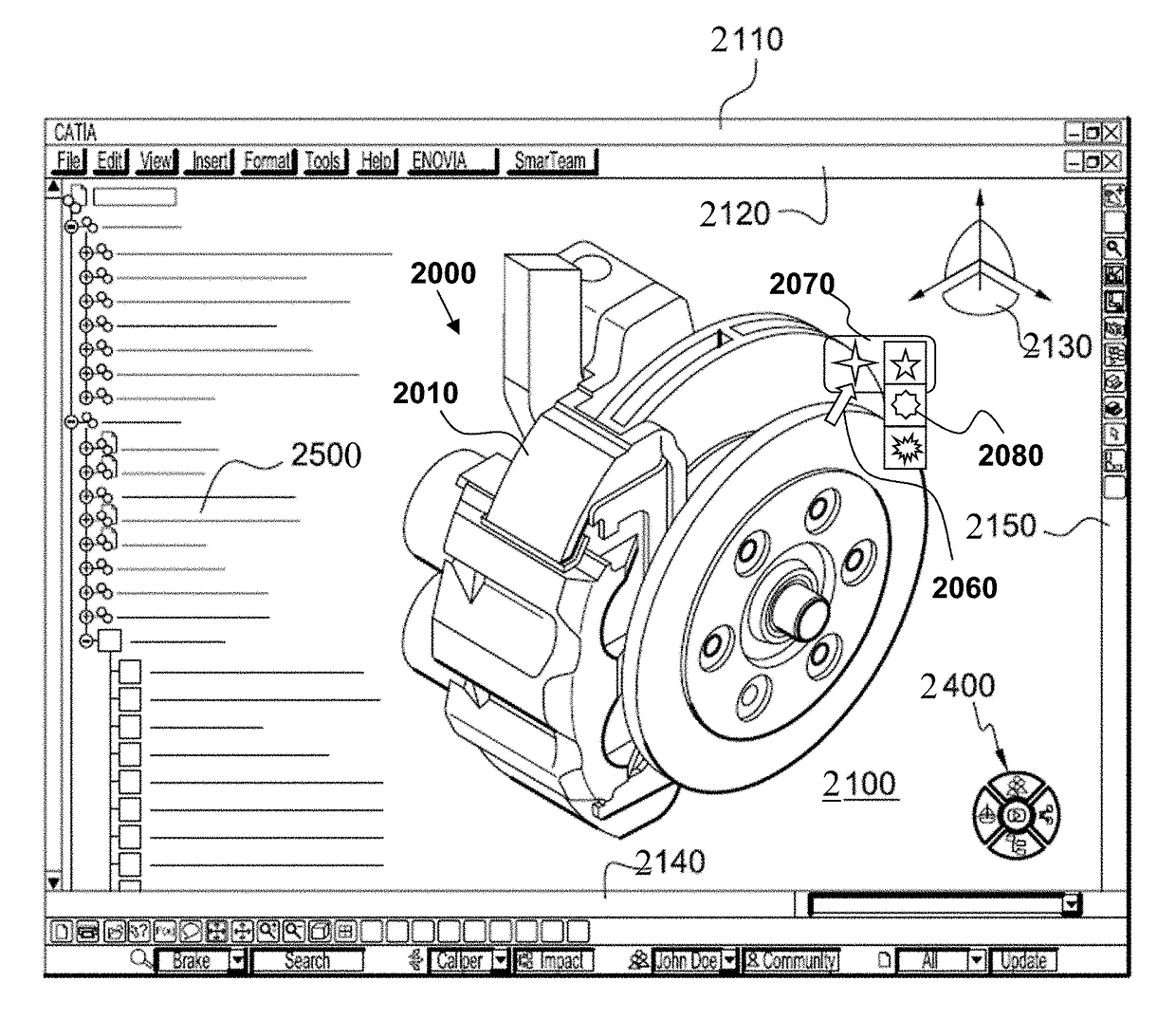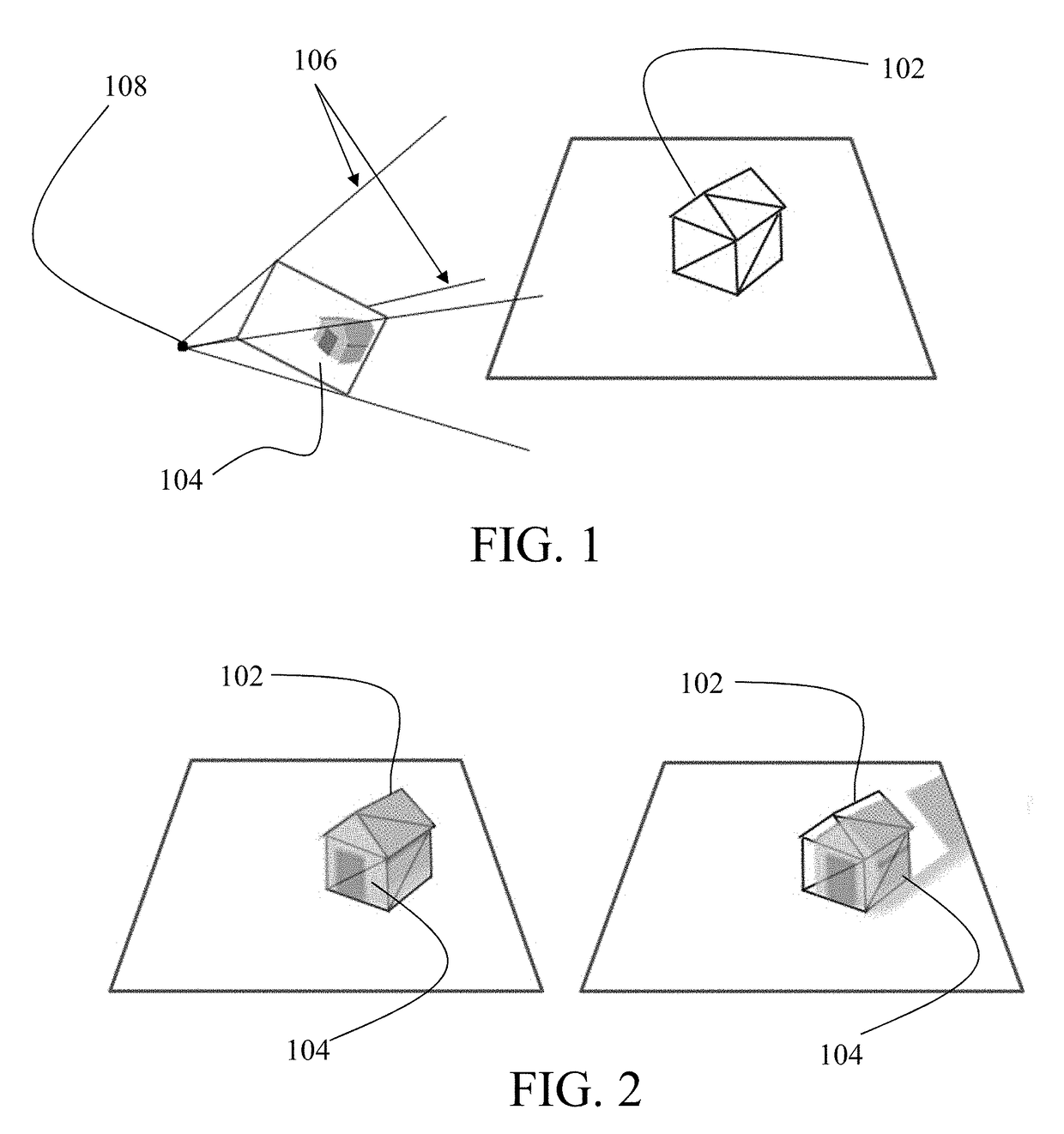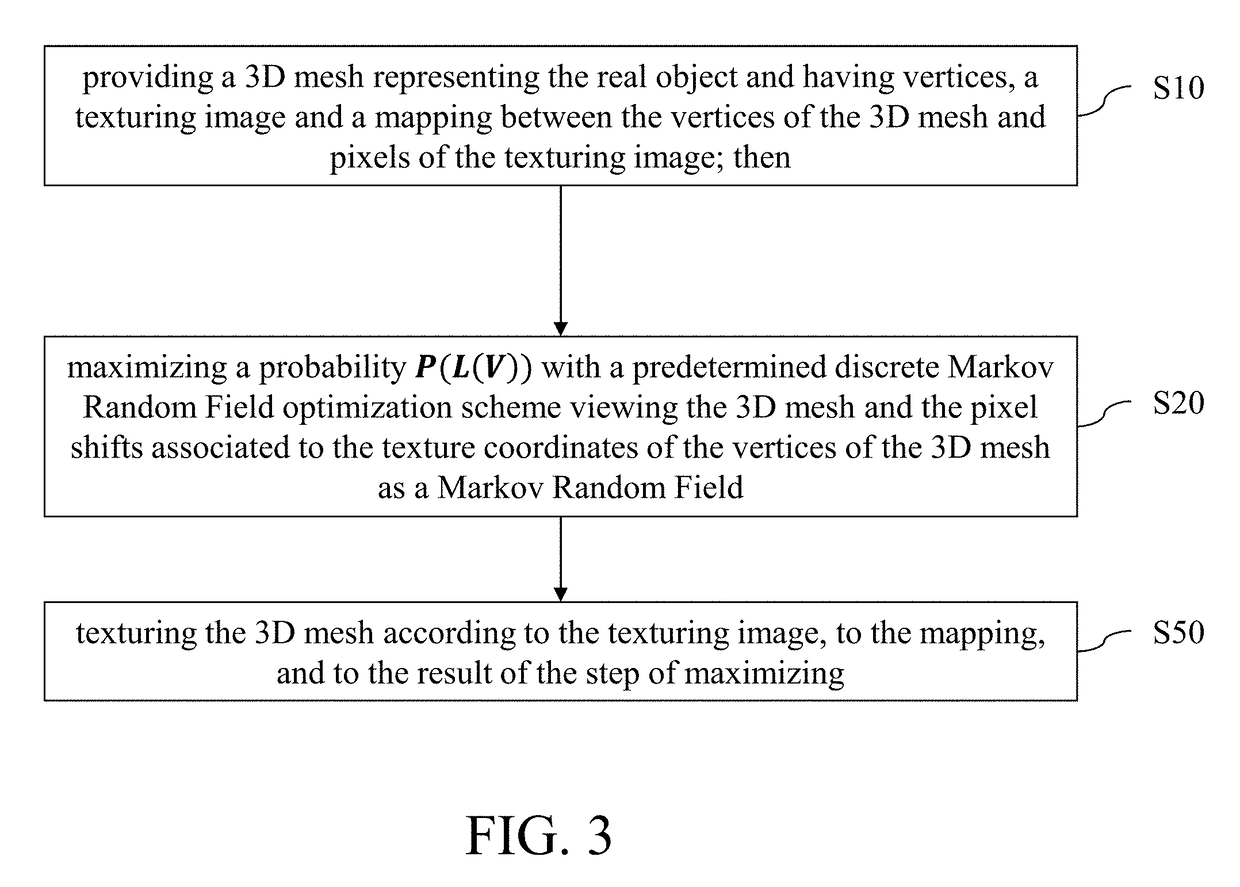Texturing a 3D modeled object
a 3d model and object technology, applied in the field of computer programs and systems, can solve the problems of deteriorating the texturing process, affecting the accuracy of the camera trajectory estimation, and being particularly sensitive to bias
- Summary
- Abstract
- Description
- Claims
- Application Information
AI Technical Summary
Problems solved by technology
Method used
Image
Examples
Embodiment Construction
[0044]With reference to the flowchart of FIG. 3, it is proposed a computer-implemented method for designing a 3D modeled object representing a real object. Throughout the method, the 3D modeled object designates data that represent the real object in different ways: first its geometry via a 3D mesh, and then a textured geometry via the textured 3D mesh outputted by the method. The method comprises a step of providing S10 a 3D mesh representing the real object (the 3D mesh having notably vertices defined by 3D positions, e.g. but also edges linking the vertices, such as a triangular or a quad mesh), e.g. a 3D mesh without any texturing or with a texturing to be replaced by a new one (i.e. the texturing outputted by the method), a texturing image (a 2D view, e.g. an image such as a photograph, of the real object provided with values at pixel locations, of gray-level or of colors such as RGB values, being noted that the figures later illustrating examples of the method mainly show gray...
PUM
 Login to View More
Login to View More Abstract
Description
Claims
Application Information
 Login to View More
Login to View More - R&D
- Intellectual Property
- Life Sciences
- Materials
- Tech Scout
- Unparalleled Data Quality
- Higher Quality Content
- 60% Fewer Hallucinations
Browse by: Latest US Patents, China's latest patents, Technical Efficacy Thesaurus, Application Domain, Technology Topic, Popular Technical Reports.
© 2025 PatSnap. All rights reserved.Legal|Privacy policy|Modern Slavery Act Transparency Statement|Sitemap|About US| Contact US: help@patsnap.com



